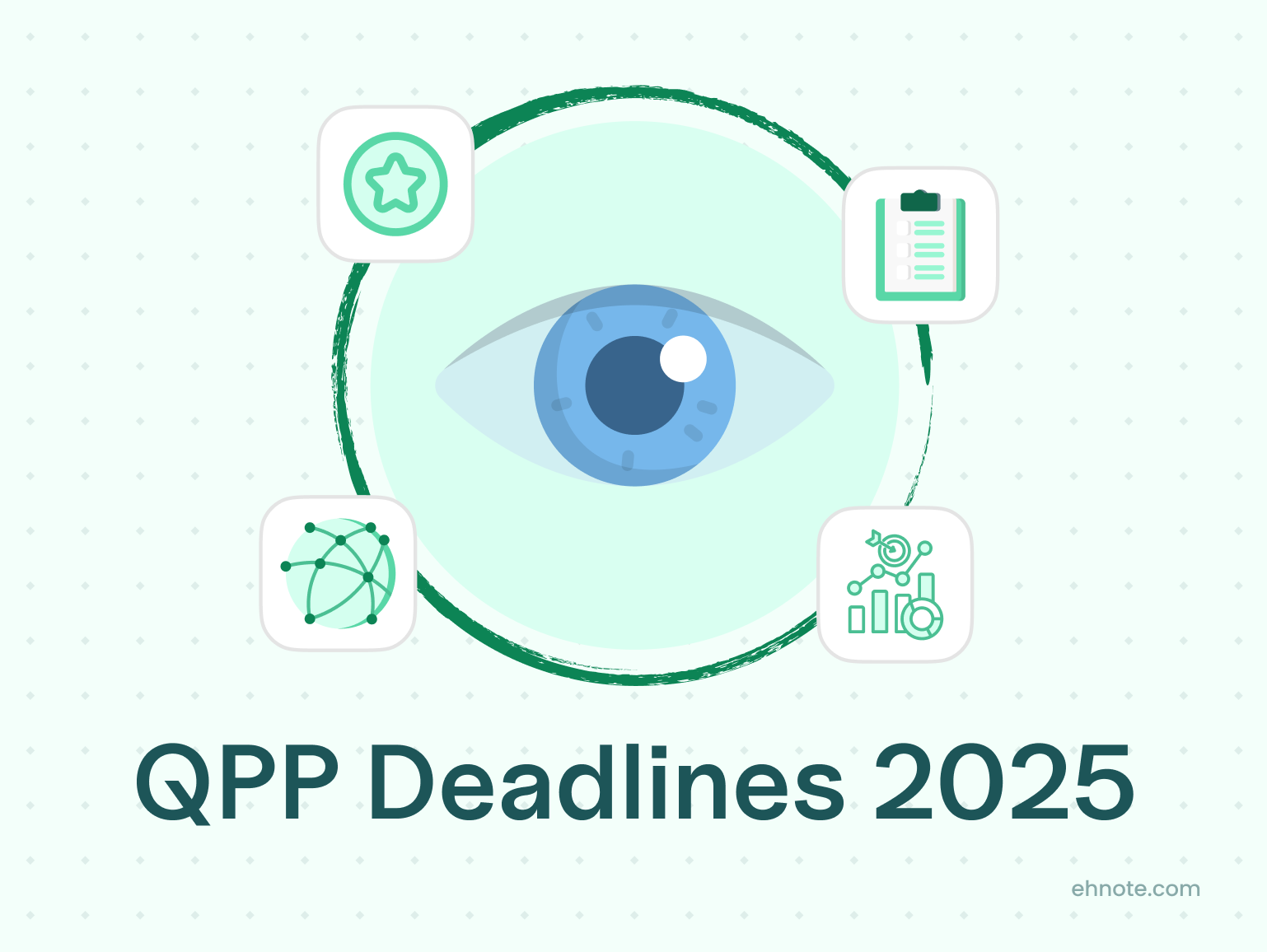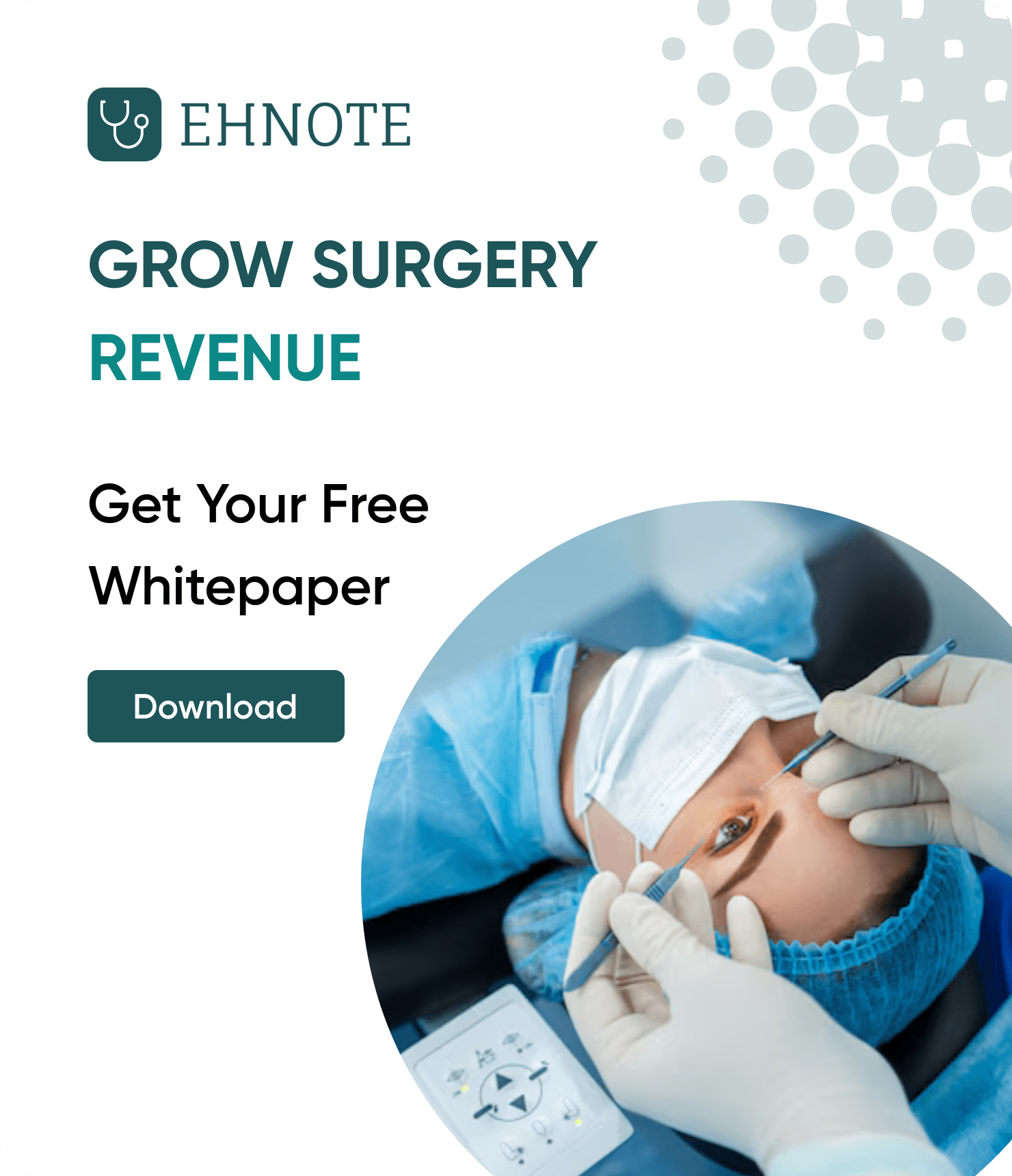QPP Deadlines for Ophthalmology Practices in 2025: How EHNOTE Simplifies Compliance

The Centers for Medicare & Medicaid Services (CMS) Quality Payment Program (QPP) is a critical framework for ophthalmologists participating in Medicare, aimed at improving care quality while reducing administrative burden. For ophthalmology practices, meeting QPP deadlines is essential to avoid penalties, secure incentives, and maintain financial stability.
As of May 2025, CMS has outlined key deadlines for the 2024 performance year, with implications for the upcoming 2025 performance year. Missing these deadlines can result in a 9% payment penalty, a significant hit for eye care practices managing high-cost procedures like cataract surgery or glaucoma treatment.
This article explores the QPP deadlines, their impact on ophthalmology, and how EHNOTE, an ophthalmology-specific EHR platform, can help practices stay compliant and thrive in 2025.
Understanding QPP Deadlines for 2024 and Beyond
The QPP, which includes the Merit-Based Incentive Payment System (MIPS) and Alternative Payment Models (APMs), requires clinicians to report performance data annually. Here are the key deadlines for the 2024 performance year, as outlined by CMS, with implications for 2025 planning:
- Data Submission for 2024 Performance Year: CMS opened data submission for the 2024 performance year on January 2, 2025, with a deadline of March 31, 2025, at 8:00 p.m. ET. Clinicians must submit data for MIPS categories like Quality, Improvement Activities, and Promoting Interoperability, or review data submitted by third parties. Errors cannot be corrected after the deadline, making accuracy critical.
- Final Scores Release: CMS will release 2024 MIPS final scores in mid-June 2025, determining payment adjustments for 2026. Practices need at least 75 points to avoid a penalty, a threshold that continues to rise each year.
- 2025 Call for Measures: CMS opened the 2025 Call for Measures in early 2025, allowing clinicians to propose new MIPS measures, which could affect reporting requirements for the 2025 performance year.
- January 1, 2025: The 2025 performance year (PY) begins, kicking off your data collection for MIPS categories like Quality, Improvement Activities, and Promoting Interoperability.
- Spring/Summer 2025: The window opens for Quality Payment Program Exception Applications, allowing you to apply for an Extreme and Uncontrollable Circumstances Exception or a Promoting Interoperability Hardship Exception if you face challenges like vendor issues or natural disasters. This window closes on December 31, 2025.
- June 30, 2025: Registration for the CAHPS for MIPS Survey ends. If you’re reporting CAHPS as part of an MVP, you must also complete your MVP registration by this date.
- July 5, 2025: The last day to start a 180-day performance period for the Promoting Interoperability category, which requires using certified EHR technology (CEHRT) to share data securely.
- October 3, 2025: The final day to begin a 90-day performance period for Improvement Activities, such as implementing patient education programs for conditions like diabetic retinopathy.
- December 1, 2025: MVP registration for PY 2025 closes, and MIPS eligibility is finalized.
- December 31, 2025: PY 2025 ends, and the Exception Applications window closes.
- January 2, 2026: The submission window for PY 2025 opens, giving you until March 31, 2026, to submit your data.
- Early Summer 2026: MIPS final scores are released, with a targeted review period opening to contest errors.
- January 1, 2027: Payment adjustments based on your 2025 performance go into effect, ranging from a -9% penalty to a +9% incentive.
For ophthalmology practices, these deadlines are not just administrative checkpoints—they directly influence revenue, patient care quality, and practice reputation. Missing a deadline or submitting inaccurate data can lead to penalties that impact the financial health of a practice already navigating complex billing for procedures like retinal surgery or LASIK.
Why QPP Deadlines Matter for Ophthalmology Practices
Ophthalmology practices face unique challenges when it comes to QPP compliance:
- High-Volume, High-Cost Procedures: Eye care often involves frequent, costly procedures like cataract surgery, which are heavily scrutinized under MIPS Quality measures. Accurate reporting is essential to demonstrate value and avoid penalties.
- Complex Patient Populations: Patients with conditions like diabetic retinopathy or glaucoma often require multidisciplinary care, complicating Promoting Interoperability requirements for data sharing across providers.
- Resource Constraints: Smaller practices may lack the staff or expertise to manage QPP reporting, risking missed deadlines or errors in submission, especially with the March 31, 2025, cutoff for 2024 data.Resource Constraints: Smaller practices may lack the staff or expertise to manage QPP reporting, risking missed deadlines or errors in submission, especially with the March 31, 2025, cutoff for 2024 data.
- Evolving Requirements: The increasing MIPS threshold (75 points to avoid penalties) and updates to measures (e.g., CMS suspending eight MIPS Improvement Activities for 2025, including those related to health equity) mean practices must stay agile to adapt to changes.
Failing to meet QPP deadlines can result in a 9% payment reduction in 2026, a significant financial blow for practices already managing tight margins. Additionally, poor performance can affect patient trust and referrals, critical for a specialty like ophthalmology where reputation drives growth.
Challenges of QPP Reporting for Eye Care Practices
The QPP reporting process presents several hurdles for ophthalmology practices:
- Time-Intensive Data Submission: Compiling data for Quality measures (e.g., outcomes for cataract surgery patients) and Improvement Activities (e.g., implementing patient education programs) requires significant time, often pulling staff away from patient care.
- Accuracy and Error Risks: With no opportunity to correct data after the March 31, 2025, deadline, errors in submission—such as incorrect coding for a glaucoma screening—can lead to penalties or missed incentives.
- Keeping Up with Changes: CMS frequently updates QPP requirements, such as the 2025 suspension of certain Improvement Activities. Practices must monitor these changes to ensure compliance, a challenge for busy eye care professionals.
- Technology Gaps: Practices using outdated EHR systems may struggle to meet Promoting Interoperability requirements, such as sharing diagnostic images securely with other providers, risking lower scores.
These challenges underscore the need for a streamlined approach to QPP compliance, especially for ophthalmology practices juggling high patient volumes and complex workflows.
How EHNOTE Simplifies QPP Compliance for Ophthalmology
EHNOTE, an ophthalmology-specific EHR platform, is designed to help eye care practices meet QPP deadlines and requirements with ease. Here’s how EHNOTE addresses the challenges:
1. Automated Data Collection and Reporting
EHNOTE automates the collection of MIPS-relevant data, such as Quality measures for eye exams or Improvement Activities like patient engagement initiatives. The platform integrates clinical documentation, diagnostic imaging, and billing data, ensuring all necessary information is ready for submission well before the March 31, 2025, deadline.
2. Real-Time Performance Tracking
EHNOTE provides a dashboard that tracks your practice’s MIPS score in real-time, helping you aim for the 75-point threshold to avoid penalties. For example, if your Quality score for cataract surgery outcomes is lagging, EHNOTE helps you to focus on specific measures, ensuring you’re prepared for the 2024 performance year submission.
3. Seamless Interoperability for Eye Care
Unlike generic EHRs, EHNOTE is built for ophthalmology, supporting Promoting Interoperability requirements with secure data sharing for diagnostic images like OCT scans. This ensures compliance with QPP standards while improving care coordination for patients with conditions like diabetic retinopathy.
4. Reduced Administrative Burden
By automating data submission and providing pre-built templates for ophthalmology-specific MIPS measures, EHNOTE frees up staff to focus on patient care rather than administrative tasks, improving overall practice efficiency.
Benefits of Using EHNOTE for QPP Compliance
- Avoid Penalties: EHNOTE ensures accurate, timely data submission, helping you meet the 75-point threshold and avoid a 9% payment penalty in 2026.
- Maximize Incentives: By optimizing your MIPS score, EHNOTE helps you qualify for positive payment adjustments, boosting practice revenue.
- Enhance Patient Care: With less time spent on administrative tasks, ophthalmologists can focus on delivering high-quality care, improving outcomes for conditions like glaucoma or macular degeneration.
- Stay Audit-Ready: EHNOTE’s comprehensive reporting keeps your practice prepared for CMS audits, ensuring compliance with QPP requirements.
Stay Ahead of QPP Deadlines with EHNOTE in 2025
Meeting QPP deadlines is a non-negotiable for ophthalmology practices aiming to maintain financial health and deliver exceptional patient care in 2025. With the 2024 performance year data submission deadline on March 31, 2025, and evolving requirements like the 2025 MIPS Improvement Activity suspensions, staying compliant can be daunting.
EHNOTE simplifies the process by automating data collection, tracking performance, and ensuring timely submissions, allowing ophthalmologists to focus on what matters most—patient care. Don’t let QPP deadlines derail your practice.
Contact EHNOTE today to schedule a demo and see how our platform can help you thrive in 2025 and beyond.
